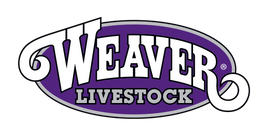
What Not to Do During Sale Season
It’s an exciting time for producers of all ages. It’s the start of another chance for the purple and hopefully, an investment in the future of your herd. For some though, the excitement is so intense that they neglect to really contemplate the decision they are about to make. Depending on your current situation, the cattle may look different but there are always certain things NOT to do when looking for the next purchase. That’s why I’ve compiled just a few of the most important mistakes to avoid.
- Do NOT shop quietly
Ever hear the phrase, “The wheel that squeaks the loudest is the one that gets the grease?” Making it known that you’re on the hunt isn’t a poor concept. You never know who might have what you’re looking for or a connection that could get you closer to finding the right one. There isn’t a sale catalog published without several people listed as contacts. CALL THEM! They don’t willingly publish their phone numbers for fun; they publish them for you to inquire about their livestock. These producers want you to be happy with your purchase. And after all, they know their livestock better than anyone so they are able to advise you in the right direction.
- Do NOT buy ‘sight’ unseen
This is where things get hairy, sometimes quite literally. When looking at cattle online or in a catalog, be sure to understand that these pictures don’t always represent the cattle accurately. Pictures, and even some videos, can be manipulated to cover major flaws or misrepresent these calves. This is where solid relationships come in to play. If you can’t physically view the livestock in person, use your relationships with sales consultants or producers you trust to get a better grip on what those cattle really look like.
- Do NOT buy based on now
The hype of cow shopping can get pretty intense, especially for juniors nearing the end of their career. Just be cognizant of the decision you’re about to make. You’re about to spend, if I had to guess, a fair amount of cash on a chance. In this industry, there is no guarantee that your project will turn out the way you’d hope. Think about the end game. How can you make the most out of this investment? Will there be any value in the calf after show season? How can you add value to the project throughout show season? Don’t make your decision based on the calf right now. Use what knowledge you have of genetics, feeding, and daily management to make the most out your investment.
- Do NOT be small-minded
My point here is to not limit yourself when it comes to options. Don’t think that you can’t buy a calf just because she’s 4 hours away. Don’t think you can’t buy a heifer just because she isn’t the right age, or breed, or color. Don’t let those things deter you from finding a good one. This is YOUR investment so it’s YOUR decision. Just think big and bold and follow your gut!
I wish you all good luck this sale season! Hopefully, you can make solid decisions and make the most out of your investment. Please remember though that genetics is only a single piece to the puzzle of winning banners! Don’t forget to put in the work at home! Good luck!
-Greg Kirlin
 Greg Kirlin resides on his family farming operation in west central Illinois and is a Feed Sales
Greg Kirlin resides on his family farming operation in west central Illinois and is a Feed Sales
Representative and Marketing Specialist for a local feed & grain company, Dearwester Grain
Services. He uses his passion for livestock production to help local producers reach their
goals in both commercial and show stock settings. His brother and he both have a passion
for raising and exhibiting purebred Simmental cattle.
Greg lives by a quote from Grant Cardone which states “Your greatness is limited only by the investments you
make in yourself.” Keeping this quote close, Greg lives each day reaching for success and working towards
goals set daily. He hopes to challenge readers to create their own success through passion, determination, and
hard work.







